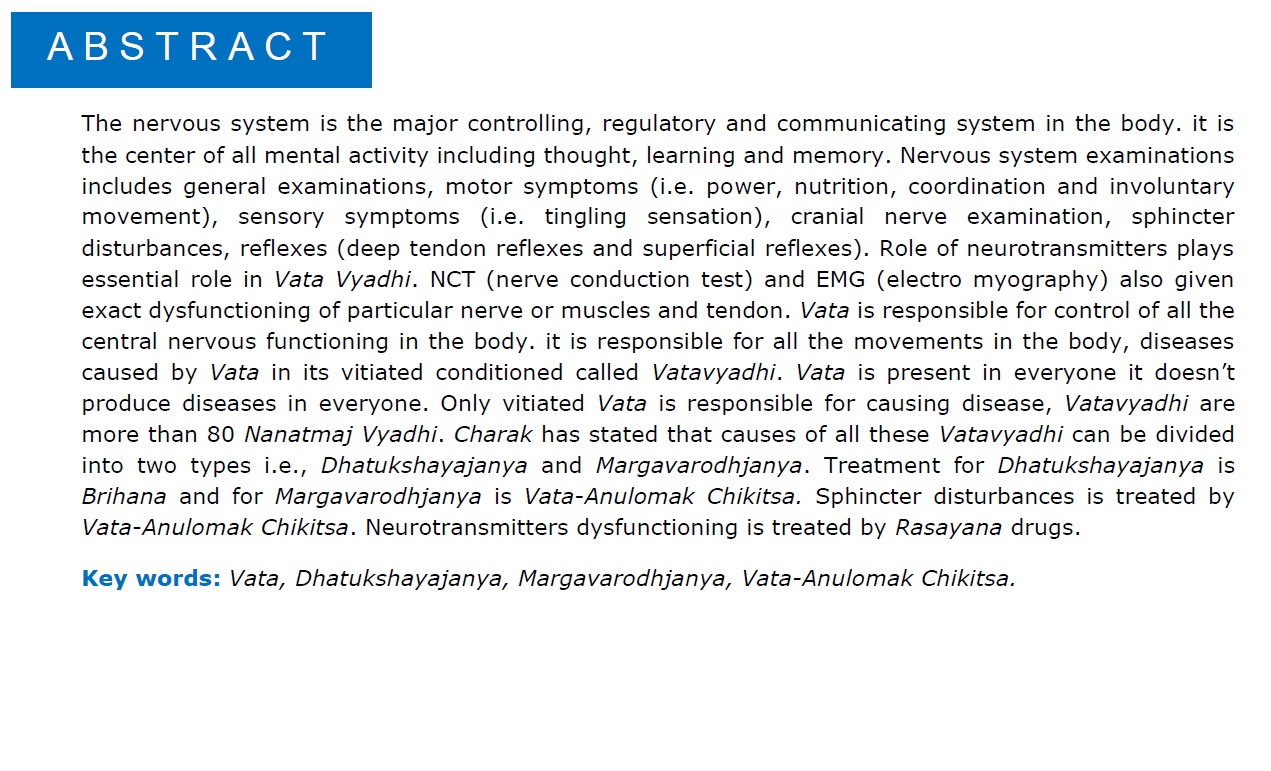Neurological examination of Vata Vyadhi and its management
Keywords:
Vata, Dhatukshayajanya, Margavarodhjanya, Vata-Anulomak ChikitsaAbstract
The nervous system is the major controlling, regulatory and communicating system in the body. it is the center of all mental activity including thought, learning and memory. Nervous system examinations includes general examinations, motor symptoms (i.e. power, nutrition, coordination and involuntary movement), sensory symptoms (i.e. tingling sensation), cranial nerve examination, sphincter disturbances, reflexes (deep tendon reflexes and superficial reflexes). Role of neurotransmitters plays essential role in Vata Vyadhi. NCT (nerve conduction test) and EMG (electro myography) also given exact dysfunctioning of particular nerve or muscles and tendon. Vata is responsible for control of all the central nervous functioning in the body. it is responsible for all the movements in the body, diseases caused by Vata in its vitiated conditioned called Vatavyadhi. Vata is present in everyone it doesn’t produce diseases in everyone. Only vitiated Vata is responsible for causing disease, Vatavyadhi are more than 80 Nanatmaj Vyadhi. Charak has stated that causes of all these Vatavyadhi can be divided into two types i.e., Dhatukshayajanya and Margavarodhjanya. Treatment for Dhatukshayajanya is Brihana and for Margavarodhjanya is Vata-Anulomak Chikitsa. Sphincter disturbances is treated by Vata-Anulomak Chikitsa. Neurotransmitters dysfunctioning is treated by Rasayana drugs.
Downloads
References
P.G. Mehta, Practical medicine, 15th edition- 2001, page-190-197
P.G. Mehta, Practical medicine, 15th edition- 2001, page-190-197
P.G. Mehta, Practical medicine, 15th edition- 2001, page-190-197
P.G. Mehta, Practical medicine, 15th edition- 2001, page-190-197
P.G. Mehta, Practical medicine, 15th edition- 2001, page-190-197
P.G. Mehta, Practical medicine, 15th edition- 2001, page-208-211
P.G. Mehta, Practical medicine, 15th edition- 2001, page-192,210
Chamberlain’s symptoms and sign in clinical medicine, colin ogilive, Christopher C-evans, 11th edition, chapter-10, page-372















